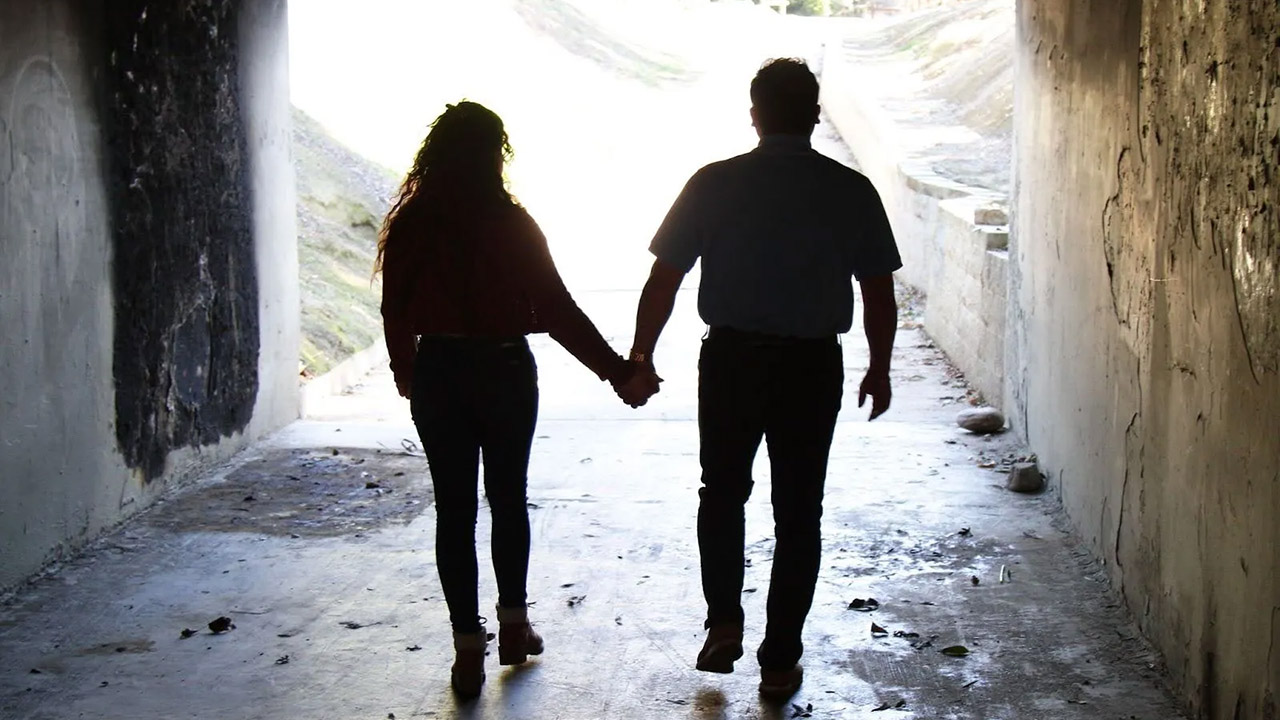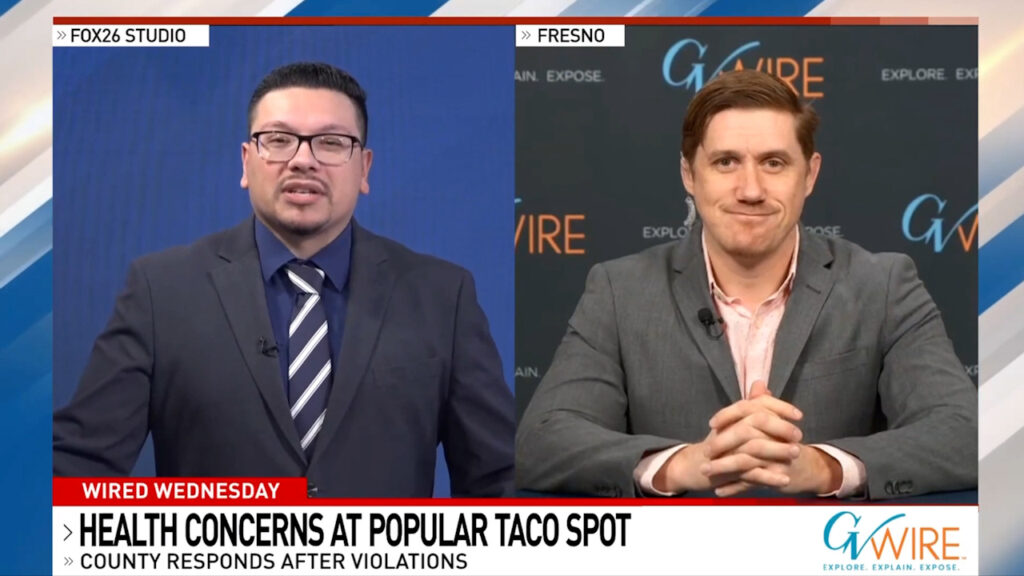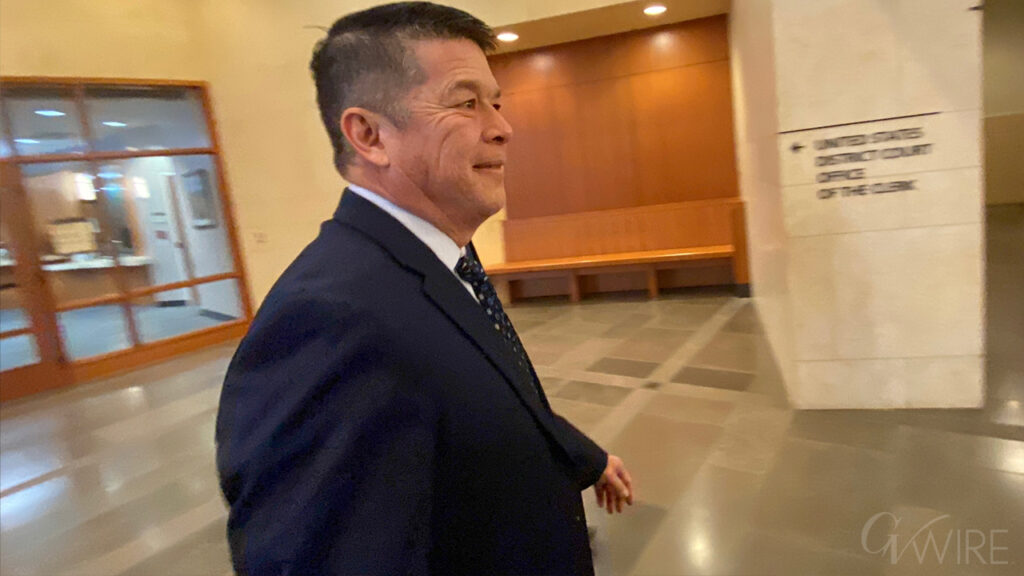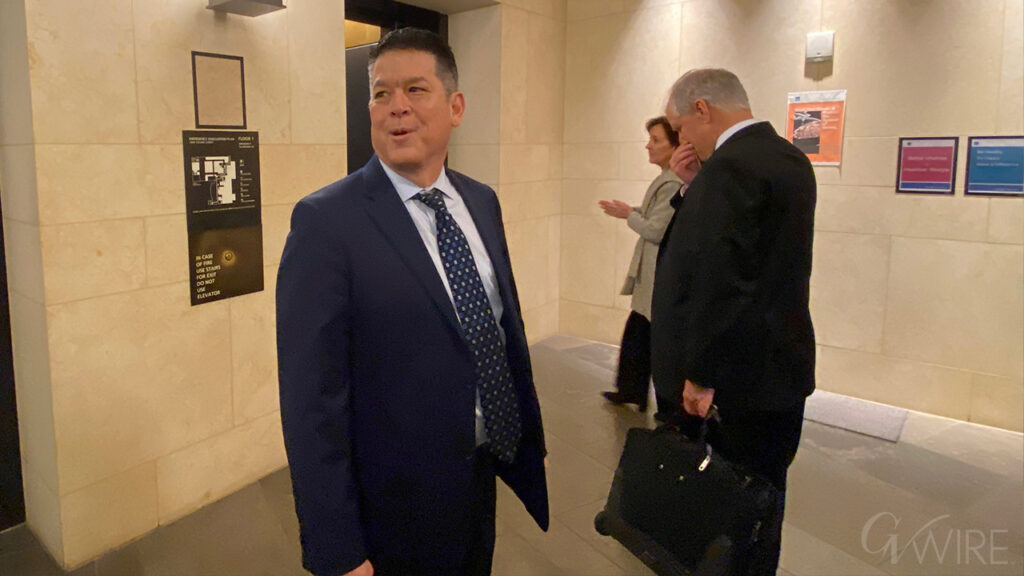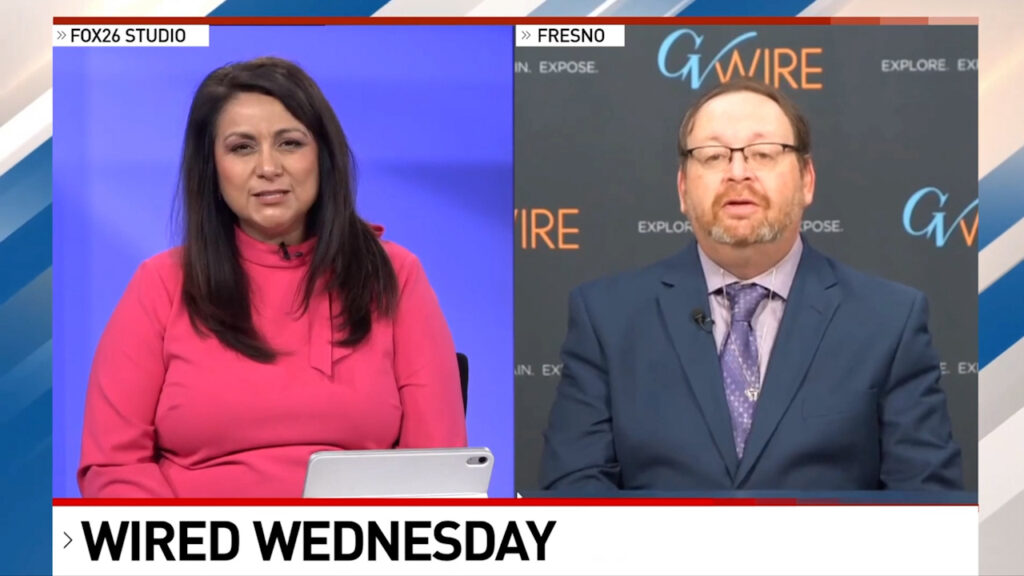A couple's harrowing journey from cartel violence to an uncertain future in California reveals the human cost of immigration policies. (CVJC/Christian De Jesus Betancourt)

- Oscar and Dania fled violence in Mexico, risking everything for a chance at stability in California's San Joaquin Valley.
- Despite asylum and hard work, the couple faces an uncertain future due to Oscar's undocumented status.
- Their story highlights the complex challenges many immigrants face in pursuit of safety and opportunity in the U.S.
Share
At 19, Dania stood trembling at the border, surrendering to U.S. authorities as cartel violence left her with no choice but to seek asylum.

Christian De Jesus Betancourt
The Merced FOCUS
Two years earlier, in 2009, at age 15, Oscar clutched borrowed documents as he sat in the passenger seat of a car inching toward the inspection booth at an international bridge — his fifth attempt after four failed crossings the year before.
Now, as parents to two young daughters living in the San Joaquin Valley, the couple’s fears no longer center on the hardships they’ve endured. Instead, they worry about their looming, uncertain future.
To protect their safety, The Merced FOCUS is identifying Oscar and Dania by their first names only.
Oscar has heard the accusations that immigrants take jobs and should stay in their countries, but he knows one universal truth: no parent risks their family’s survival.
“If the same thing happened here in the U.S., wouldn’t you try to go somewhere else where your family could be stable?” he asked. “If Mexico were prosperous and the U.S. wasn’t, would you want to be told, ‘Go back to your country,’ knowing that all you’re doing is trying to give your family a better life?”
Today, Dania holds asylum as a fragile shield, while Oscar lives in the shadows, denied life-changing opportunities as he works tirelessly to provide for their family.
“The worst thing that could happen is being separated,” said Dania. “Oscar doesn’t have legal status here. If he were to be deported, that would be the worst. But we’ve done nothing wrong, and we’ve done everything we can to be good, contributing people, paying everything the state asks of us.”
While Oscar’s status leaves their future uncertain, Dania’s path to the U.S. was shaped by a different struggle — one marked by cartel violence and a desperate bid for safety.
Oscar and Dania are among thousands of immigrants who risked everything for a chance at stability in the San Joaquin Valley. But even after surviving cartel violence and perilous crossings, the life they built remains uncertain. With a new Trump administration signaling a renewed crackdown on immigration, the threat of deportation looms larger than ever.
Related Story: US Imposes Sanctions on Top Members of the Armed Wing of a Mexican Fentanyl-Trafficking Cartel
Fleeing the Cartels: Dania’s Search for Safety
Dania was born in Felipe Carrillo Puerto, Michoacán, a rural town where generations built their lives around citrus groves.
By 2011, violence and poverty in her hometown had reached a tipping point, forcing her to decide to leave.
“Por eso es que nos vinimos para acá, porque había mucha violencia y pues también mucha pobreza — That’s why we came over here. There was too much violence and poverty,” she said in Spanish.
The rural areas of Michoacán were engulfed in severe cartel violence, primarily due to conflicts involving La Familia Michoacana and its successor, the Knights Templar Cartel, which vied for control over drug trafficking routes and local economies, leading to widespread instability and fear among residents. The power vacuum and ensuing battles between cartels resulted in increased violence, including extortion, kidnappings, and murders, particularly affecting small, rural towns.
Most of Dania’s family, excluding her brother and father, settled in the U.S. two years earlier. She longed to reunite with them. But until then, she stayed behind to manage the family’s small store in town.
“I stayed behind taking care of a business we had that failed due to the violence,” Dania said. “We weren’t extorted, but people were afraid to go out and buy things.”
What had once been a steady source of income crumbled as fear kept customers indoors. The once busy avenue where their shop stood became eerily quiet.
“Many of the people out there worked in the drug business, so those of us who made an honest living couldn’t prosper,” she said. “They wouldn’t let us.”
Determined to escape the escalating cartel violence that gripped her hometown, Dania made her way to the U.S., surrendering herself at the border in San Ysidro near Tijuana, to seek political asylum.
“It was hard because they wouldn’t let me through,” she said. “I knew I couldn’t turn back since I was on the run. I was begging them, and they threw my passport on the floor. They asked if I was making fun of them.”
Related Story: Bannon Calls Musk a ‘Parasitic Illegal Immigrant’
Expert Insights: The Systemic Hurdles Immigrants Face
For many fleeing Michoacán’s bloodshed, escaping wasn’t enough. Once they reached the U.S., they fought to prove their persecution met the strict legal criteria for asylum.
“They can only be granted asylum if they can prove that they have faced persecution based on one of the five protected grounds: race, religion, nationality, membership in a particular social group, or political opinion,” said Tanya Golash-Boza, executive director of the University of California Washington Center.
“It’s not enough to argue that the cartel has plans to kill you. You also have to make the case that you’re being targeted based on these protected reasons,” she said.
Eventually, an agent picked up Dania’s passport and transferred her to a different facility. That moment marked the beginning of her month-and-a-half detention in an immigration center.
“Pues fue algo difícil porque estaba privada de mi libertad. Me trataron como criminal — It was hard because I was deprived of my freedom and treated like a criminal,” Dania said in Spanish. “I was asking for help, not committing a crime. They would throw food on the floor, and it was even harder if you didn’t speak English. They would humiliate people.”
A 2014 report found that asylum seekers fleeing cartel violence often struggled to pass credible fear interviews, a key step in the process that determines whether an individual has a legitimate asylum claim. This interview assesses whether they will face persecution or torture if returned to their home country. Still, inconsistencies in evaluations have led to many being denied protection despite real threats to their safety.
The obstacles asylum seekers face today stem from historical policies that have often prioritized certain refugee groups over others, according to Ma Vang, assistant professor of critical race and ethnic studies at UC Merced.
For decades, U.S. foreign policy played a key role in determining who was granted asylum, favoring those fleeing communist regimes during the Cold War while denying protections to others escaping gang violence or economic devastation.
“Those seeking protections from communist regimes that were part of the global Cold War struggle were more likely to receive refugee status and get accepted by the U.S. for resettlement,” Vang explained. “Due to these limitations, determination as a refugee and access to certain legal protections were arbitrary and often (left) out others who experienced conditions of violence via gang violence.”
Upon arrival, many asylum seekers were subjected to mandatory detention under the Illegal Immigration Reform and Immigrant Responsibility Act (IIRIRA) of 1996, which expanded the use of detention for noncitizens, including asylum seekers.
Dania described the detention center as overcrowded, with beds packed tightly together, no privacy, and no separate areas. The harsh conditions left little relief from the overwhelming uncertainty.
Mixed in With ‘Actual Criminals’
“There were actual criminals in there, and we were all mixed up together,” she said. “There was a lot of uncertainty. (The people running the site) would ask me, ‘Why did you come here? You’ll never see your family again.’ I didn’t know what was going to happen. I couldn’t talk to my family and tell them what was going on.” Reports from that period highlight overcrowding, lack of privacy, inadequate medical care, and limited access to legal resources.
Then, one day, after a credible fear interview with immigration officials, Dania was allowed to leave the center and begin her asylum process.
The condition of her release was clear: a U.S. resident with legal status had to pick her up and take her to Richmond in the Bay Area, where the rest of her family was waiting.
“One of my aunts was able to pick me up,” she said.
Dania’s asylum seeker status allows her to work legally and build a life in the U.S., but it does not shield her from certain challenges.
Vang explained that while asylum seekers and undocumented immigrants are entitled to fundamental rights — such as due process and protection from unlawful searches — their inability to access social programs leaves them particularly vulnerable.
“These obstacles have been one of the major arguments for immigrant rights because undocumented and asylum seekers work and pay taxes but are barred from utilizing services that they help fund,” Vang said.
Crossing Without a Choice: Oscar’s Struggle for a Future
Long before Dania sought asylum, Oscar’s family faced a different set of barriers — ones that would shape his journey north.
At age 11, Oscar split his days between school and the bustling markets of Mexico City, where he helped his parents sell hamburgers, tortas, and tamales.
In 2005, as Oscar’s parents weighed the decision to migrate, many low-income families in Mexico City depended on traditional mercados for their livelihoods.
Families often faced significant economic challenges, including low wages and job instability. The informal nature of market work meant that many vendors lacked access to social security benefits and legal protections, exacerbating their financial vulnerability.
“Era caro vivir en la ciudad – It was expensive living in the city,” he said in Spanish. “My parents left, and we stayed with my grandparents.”
Their plan was simple: go to the U.S. with a work permit and earn enough money to build a more stable future, then return to the children they would temporarily leave behind under their grandparents’ care. Obtaining U.S. work visas and green cards is complex, time-consuming, and financially burdensome, making it particularly challenging for individuals lacking substantial resources.
Each step could take a year or longer to complete, and the associated costs, including filing fees and legal expenses, are often prohibitive for low-income families.
“The 1965 U.S. immigration reforms removed the racist national origins formula from earlier immigration quotas, but then new country caps in place by the late 1970s made it far harder for Mexicans to immigrate legally,” said Jennifer Cullison, a history professor at Stanislaus State. “Thereafter, undocumented migration became the only realistic option for many because former legal routes had narrowed or simply didn’t exist.”
The national origins formula, which favored northern and western European immigrants for decades, was replaced by a system that placed numerical caps on immigration from each country. While intended to make the process more equitable, the reforms significantly limited the number of visas available to Mexican applicants, despite ongoing labor demand in the U.S. This created a bottleneck that forced many to bypass legal channels entirely.
With no affordable, timely legal path available, Oscar’s parents decided to cross without authorization.
“They just went for it,” Oscar said. “Trying to do it legally is not feasible for most people. Some say we should do it the right way, but it’s just not possible.”
On the other side of the border, life did not go as planned. Oscar’s father took on graphic design work while his mother found a job at a supermarket, but the cost of survival consumed every paycheck, and saving became a distant dream.
“It just never happened,” Oscar said about his parents’ original vision. “No matter how hard they worked and worked, it wasn’t possible. Our parents called and said, ‘Change of plans, you’re coming back here with us.'”
If, at First, You Don’t Succeed, Try Again
In 2008, three years after his parents left, Oscar, 14, and his two younger siblings, 10 and 6, traveled to Mexicali with their grandmother, hoping to reunite with their parents. But reuniting wasn’t as simple as crossing a bridge. With no clear plan and no connections in the city, the children wandered through Mexicali, searching for a coyote — a human smuggler who could help them cross.
“Since the federal government began heavily investing in border security, coyotes have had a harder job to do,” Cullison said. “They’ve had to figure out new routes, take more dangerous paths, and their fees have grown exponentially as a result.”
Oscar recalled how his younger siblings crossed with ease, fast asleep using borrowed papers, while he, deemed too old, was forced to take a more perilous path.
“They made me cross in various ways,” he said. “If something wouldn’t work, they would try another way.”
His first attempt involved scaling the wall. He barely made it over before authorities detained him, separating him from the adults.
“I was the only kid, so I was always alone,” he said. “I would get detained for two or three days.”
Oscar disappeared into the system each time he was caught, leaving his family in the dark.
Mexican authorities placed him in Integral Family Development – Desarrollo Integral de la Familia (DIF) custody – the Mexican government agency responsible for child welfare – where children like him were often left in overcrowded shelters with little oversight.
“Unaccompanied minors in the U.S. were placed in (Office of Refugee Resettlement) shelters, which were more humane than adult immigration detention,” said Cullison.
Children like Oscar, who were stuck in Mexico, faced vastly different conditions. DIF facilities varied widely, and reports from the time highlight emotional mistreatment and family separation.
In Baja California, Mexico, children taken into custody by DIF were often placed in temporary shelters known as Albergues Temporales, where reports from the time documented overcrowding, lack of privacy, inadequate medical care, and limited access to legal assistance. Some, like Oscar, endured emotional abuse at the hands of staff members.
“(The people in charge) would tell me they wouldn’t let me out this time,” Oscar recalled. “They would tell me that if my parents truly loved me, this wouldn’t be happening.”
Reports of the facilities in Mexico documented emotional mistreatment and isolation in DIF shelters, where children were often told they’d never reunite with their families.
After a month of failed attempts, Oscar gave up and returned to Mexico with his grandmother, knowing that his younger siblings successfully crossed the border and reunited with their parents.
“I spoke with my parents, and they told me my siblings were with them while they were waiting for me,” said Oscar. “I tried one more time. It didn’t work. Once I knew my siblings were safe, I said no more and I went back.”
A year later, in 2009, a 15-year-old Oscar was able to cross on the first try after a different coyote helped him, using someone else’s documents to get through the checkpoint. This time, luck and timing were on his side, and he was finally reunited with his family.
“I was still afraid, but my parents told me it would be different,” he said.
Once on the U.S. side, after being picked up by his whole family, they went to In-N-Out.
“I still remember it to this day,” said Oscar. “It tasted like California.”
About the Author
As the Bilingual Community Issues Reporter for The Merced FOCUS, Christian De Jesus Betancourt is dedicated to illuminating the vibrant stories of the Latino Community of Merced. His journey is deeply rooted in the experiences of migration and the pursuit of a better life.


